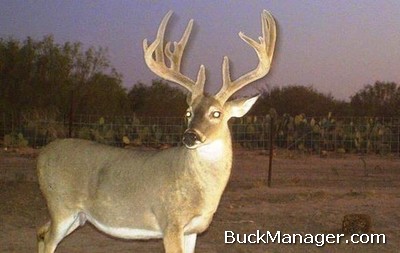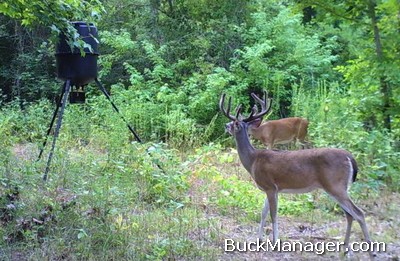White-tailed deer hunting is a privilege and a passion that many hunters are born into. The majority of deer hunters start by first accompanying their father or grandfather on deer hunting trips. Then slowly, but surely, the desire to learn more about, chase and hunt whitetail deer creeps into your skin. Once deer hunting catches fire, it’s difficult to shake. Most hunters wait all year in anticipation of the fall deer hunting season; scouting, planning and fine tuning their skills.
Deer hunting is truly an obsession, but it’s not just about the kill. Hunters relish their time in the woods. A hunter looks forward to climbing into his or her stand, allowing the cool north winds to blow across their face as they wait patiently, content to imagine that a mature whitetail buck will cross their path. Then it all comes down to seconds. A successful deer hunting trip and an unsuccessful attempt is measured by just seconds or inches. It’s not as simple as many non-hunters would think. Every deer hunter knows why they are called “white tail.” That is often times the last thing you see.

White-tailed deer are smart animals. They have great eyesight, but it pales in comparison to their sense of smell. A whitetail’s nose is its biggest defense mechanism, always using the wind to its advantage. Good deer hunters have found this out the hard way. And by the way, no one starts out as a good deer hunter. An accomplished hunter will agree that becoming a good deer hunter takes experience, but unfortunately, experience comes from being a not-so-good deer hunter. Nothing in life is easy, but especially when it comes to pursuing whitetail deer.
As mentioned earlier, deer hunting is not easy—and that is exactly why it attracts a lot of people to it. The challenge of making a successful harvest is built into the human psyche. As humans, we are a collection of hunters and gatherers. I believe that part of the satisfaction from a successful deer harvest, whether buck or doe, is that not only have we outwitted our target, but we have captured our prey. Simply said, we have put food on the table. There is some amount of satisfaction in a job well done.
Most whitetail hunting takes place East of the Rocky Mountains. This is where most whitetail are found. The whitetail uses a variety of habitat types found from the gulf coast and down into Mexico and all the way up into Canada. There are at least 25 whitetail subspecies. Whitetail range in body size depending on several factors, but it mostly depends on where they are found. In general the size of a deer increases as one goes north. This is a function of body mass and winter temperatures. It takes more insulation to make it through a Canadian winter than a Florida winter.
There are many ways to hunt deer. The most common deer hunting strategies include either stand hunting or still hunting. Stand hunting involves using either an elevated or ground blind. When this tactic is implemented, hunters scout an area deemed suitable for whitetail, identify trails or food sources, set up their hunting blind accordingly, then wait in ambush. Some states allow baiting during the deer hunting season. Food plots and deer feeders, typically filled with corn, can be used to attract animals for harvest. Foods serving as bait can help attract deer, but they don’t always work. Deer learn when and when not to be around food stations. Stand hunting is the default deer hunting method in states that have little public hunting land because it relies on the deer coming to the hunter, not the other way around.
Still hunting is just the opposite in that it involves active searching; walking, waiting and looking for deer. This is more feasible on larger tracts, where more area can be covered by the hunter. This is an effective deer hunting method in more open habitat types where hunters can see the deer before the deer sees the hunter. Both methods, stand or still hunting, involve using the wind to the advantage of the hunter. Never forget the power of a whitetail’s nose.
Over the past few decades, deer hunting has taken on a life of its own. Not only has it remained socially important, but it has become economically important. In addition, research conducted by wildlife biologists have taught hunters and landowners that deer herds can be managed. Recently, white-tailed deer management has become the go-to way to produce and grow trophy deer. Deer management involves managing deer populations to reach age, genetic and nutritional objectives.
Age can be managed through controlled or regulated deer harvest. Research has found that bucks do not reach their maximum antler potential until they are 5 1/2 or 6 1/2 years old. Managing the buck segment of a deer herd with this in mind means harvesting only 15 to 20% of the bucks on a property in any year. Genetics were historically managed for through selective harvest of bucks, but now commercial deer breeding facilities offer deer that are “genetically superior’ for sale. These deer can be purchased and introduced into a deer population to improve genetics, antler quality and whitetail deer hunting. Not all hunters are in favor of commercial deer breeding facilities, but they are legal in many states.

Another important component of deer management for improved deer hunting is managing for proper deer nutrition. There are several management techniques that can be used in combination to provide whitetail with a stable nutritional plane throughout the year. Good nutrition means improved deer body condition that transfers into better antler growth in bucks, higher fawn production by does, increase survival by fawns, increased deer density, and more deer hunting opportunities due to a healthy, prolific deer herd. Methods to increase deer nutrition include habitat management and enhancement activities, supplemental feeding and food plots. In short, deer management for improved deer hunting means controlling the age, genetics and nutrition of a deer population as well as the habitat where they are found.
In closing, white-tailed deer hunting is as popular as ever across North America. It is important both socially and economically, across all economic classes. Deer hunting provides recreational opportunities for millions of hunters each year and teaches individuals to respect and adore the outdoors, specifically white-tailed deer. In general, deer hunting opportunities are decreasing because of the loss of rural lands due to urbanization, habitat loss/degradation due to agricultural practices, reduced access to private lands and the increasing cost of hunting in general. Like any free market, supply and demand determine the costs. Like many things, deer hunting is an activity that many find initially enjoyable, but it takes years of experience to really get good at it. If you’ve never been, then I’d recommend that you—pun intended—give it a shot.
My daughter is doing a science fair project on corn versus rice bran to attract deer. Do you have any packets of information on this topic, or a specific article or brochure that tells about this topic? Thanks!
Robin, check out rice bran for attracting deer.
Trying to manage or deer herd for better hunting. I would like to know more about corn verses rice brand for whitetail. Thank you.